#eriocapitella hupehensis
Text
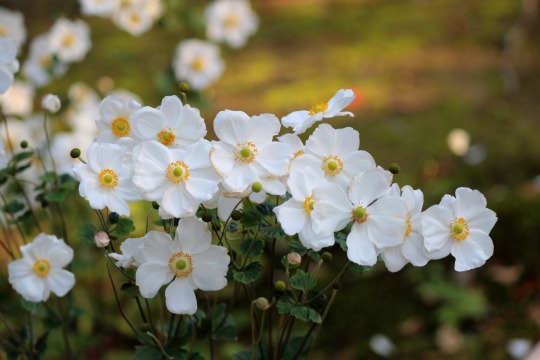
Japanese Anemone
Kanazawa, Japan
#photographers on tumblr#nature#flowers#white#autumn#floral#flores#blanco#anemone#japanese anemone#eriocapitella hupehensis#fall#landscape#kenroku en#兼六園#japanese garden#kanazawa#japan#original photographers#original photography
664 notes
·
View notes
Text
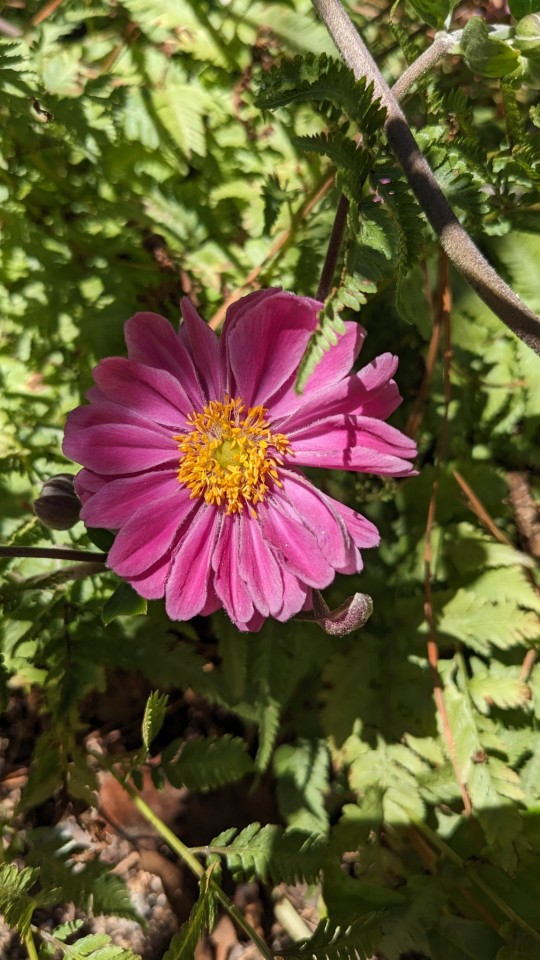
Eriocapitella hupehensis / Japanese Anemone at the Sarah P. Duke Gardens at Duke University in Durham, NC
#Eriocapitella hupehensis#japanese anemone#Anemone#Nature photography#Flowers#photographers on tumblr#Sarah P. Duke Gardens#Duke Gardens#Duke University#Durham#Durham NC#North Carolina
4 notes
·
View notes
Video
n83_w1150 by Biodiversity Heritage Library
Via Flickr:
Aristocratic seeds.. Pittsburgh, Pa. :Beckert Seed & Bulb Co.,[19uu]. biodiversitylibrary.org/page/43484549
#Catalogs#Flowers#Gardening#Pennsylvania#Seeds#U.S. Department of Agriculture#National Agricultural Library#sea lavender#Limonium#Cardinal flower#Lobelia cardinalis#stokes aster#Stokesia#Stokesia laevis#Iceland poppy#Papaver nudicaule#primrose#Primula vulgaris#japanese anemone#Eriocapitella hupehensis#canterbury bells#Campanula medium#foxgloves#Digitalis#candytuft#Iberis#tritoma#Kniphofia#Red hot pokers#lychnis haageana
2 notes
·
View notes
Text
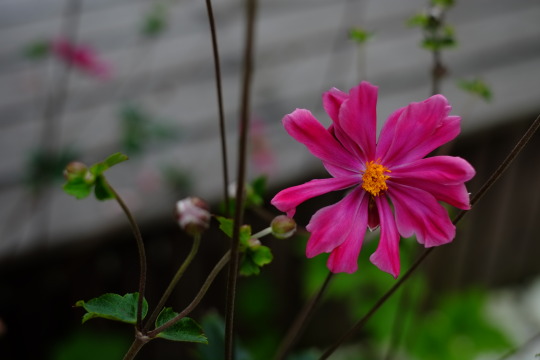
1 note
·
View note
Text
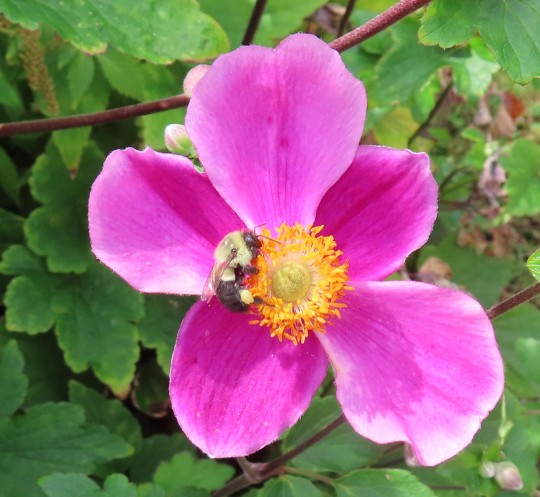
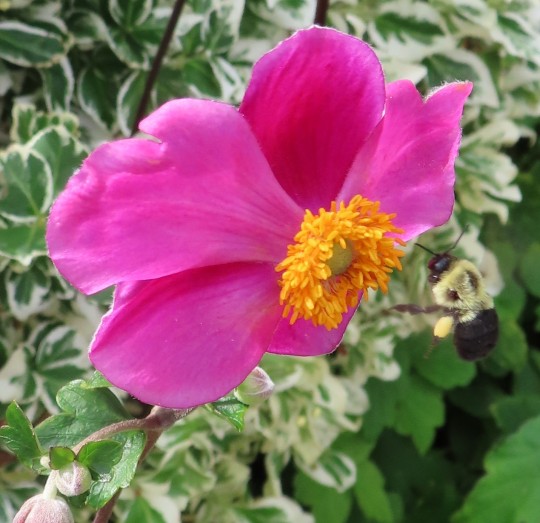

Eriocapitella hupehensis (Japanese anemone) and Bombus (bumblebee)
I've always called this flower a Japanese anemone (Anemone Japonica) but in 2018 it was officially renamed Eriocapitella hupehensis. It's new species name means "from Hupeh province, China". Unfortunately, most gardening websites (and all the plant shops I visit) still refer to this as a Japanese anemone. Change comes slowly to the gardening world and I'm sure people will still be calling this a Japanese anemone in a thousand year's time.
As for the 'positive affirmation' message rocks, I avoid these things in my own garden. I much prefer it when my flowers speak for themselves.
#flowers#photographers on tumblr#anemone#japanese anemone#what's in a name?#fleurs#flores#fiori#blumen#bloemen#vancouver
96 notes
·
View notes
Text
I'll admit I did not pay much attention to the flowers in the infamous Flower Field scene on a structural level on my first time watching Rebellion. At first glance, I took them for rain lilies (Zephyranthes spp.); then, when they transformed and went to seed, I assumed they were meant to be dandelions, which form distinctive white puffballs that are known as "clocks" and which are said to grant wishes, both of which seemed thematically appropriate in context. At the time, I assumed botanical accuracy was less important to the animators than symbolism, and didn't think too much of it.
Then I went back and looked more closely, and realized I might have been wrong about all of that.

On closer inspection, these are not rain lilies or any other monocot bulb (which always have petals in multiples of 3, never 5). Nor are they members of the dandelion family (my next guess) despite having the anthers clustered in a similar ring at the center. So what other flower meets this criteria?
I did some more digging, and "Japanese anemone" kept coming up as a possible candidate, so I checked it out, and...

Look familiar? [Source].
Japanese anemones (Eriocapitella [Anemone] hupehensis and related hybrids) are members of the buttercup family; despite the common name, they are originally native to China, but have been grown in Japan for centuries.
Because of various evolutionary shenanigans the actual flowers are tiny and clustered in the center and the white "petals" are actually colorful sepals. Many cultivars have more than five, but these are close enough to pass for what we see on-screen if you squint even though they don't overlap in the animated version.
Anemones also have divided leaves very similar to what we see in other shots:

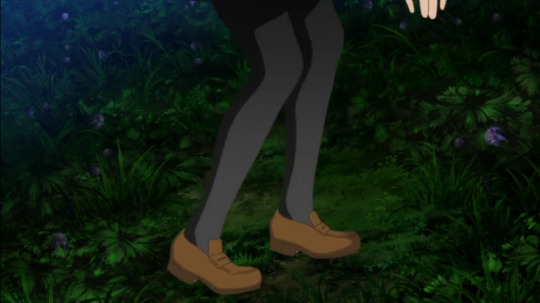
Even better, Japanese anemones also make white little puffball seedheads similar to dandelions!

Now in real life, these puffballs are not as round and blow away almost instantly, so they do not hold together like they do here, but neither do dandelions, for that matter. I think this is a case where "aesthetics and symbolism" won out versus pure realism.

I had thought the accelerated life cycle of Homura's flowers was an exaggeration, but it turns out that Japanese anemone seed heads can apparently unfold over the course of a single afternoon, so while this is still faster than real life, it's not as much of a stretch as I initially assumed.
So am I convinced these are meant to be Japanese anemones? I can certainly see the resemblance, but if so, I wish the animators had been slightly more true to life with the "petal" placement and with the floral height--the plants I have seen are usually 2-4 feet tall with somewhat staggered flower heights, while these are much shorter and with uniform height throughout. It's possible they may have been working from another anemone species/hybrid that doesn't quite map to the plants I know, or they may have just chosen to change it up as needed for convenience.
Currently filing this ID under "tentative yes, to be revisited if/when new evidence arrives".
I still think they should have gone with dandelions, though.
50 notes
·
View notes
Note
For the last/surnames for your mjv pieces, is there any specific meanings/symbolism when you give them those surnames? Like “Hinoki” for Kieran & Carmine, since Hinoki means “cypress” and it’s a real life tree.
(Sorry if this is a specific question. This is my autistic brain and curiosity of fictional name symbolism)
YES, THERE IS!! i'm also an autistic person who's obsessed with name etymology so i love giving characters ( original or otherwise ) names that symbolizes something about them or something they're associated with.
since i didn't do this before, i'm gonna use this as an excuse to explain the etymology behind the full names i gave the SV kids! some of them are more interesting than others, fair warning.
putting it under a cut since this may get a little long.
CRATER CREW + KITAKAMI KIDS
FLORIAN RUSSEL CAVALLARI & JULIANA SIGAL CAVALLARI
> cavallari ( spanish, from "caballero" meaning knight, cavalier, or rider ) — referencing their connection to koraidon, the designated ride pokémon of scarlet.
> russel ( french, little red ) — meant to signify his role as the protagonist of scarlet.
> sigal ( hebrew, viola ) — meant to signify her role as the protagonist of violet.
NEMONA CAMINO VALIENTE
> camino ( spanish, road ) — references her role as the main companion of the victory road storyline.
> valiente ( spanish, brave or bold ) — meant to signify her forward and adventurous nature.
ARVEN MITO ALFARO
> mito ( spanish, myth or legend ) — references his role as the main companion of the path or legends storyline.
> alfaro ( spanish, the lighthouse ) — references the poco path lighthouse, the professor's old lab and his childhood home.
PEONELOPE " PENNY " CASSANDRA ESPINOSA
> peonelope ( peony + penelope ) — there's no real significance to this name choice, i just thought it'd be funny if peony continued the trend of shoehorning his own name into his kids' in increasingly ridiculous ways.
> cassandra ( greek, to shine or excel ) — meant to sound similar to cassiopeia. it also made me think of shining like a bright star.
> espinosa ( spanish, thorn ) — meant to reference penny's relation to chairman rose through her father, peony. this is actually her mother's maiden name, peony took her surname to distance himself from rose and kept it even after getting divorced.
CARMINE & KIERAN HINOKI
> hinoki ( japanese, species of cypress native to central japan ) — references their family's craft of mask making, as hinoki wood is commonly used to make noh masks.
TEAM STAR CAPTAINS
GIACOMO LAUREANO MORENA
> laureano ( spanish, laurel ) — larry's name from the spanish translation of sv. meant to reference my headcanon that larry is giacomo's father.
> morena ( spanish, dark-haired ) — a loose reference to his dark type specialization.
MELA CANDELLA LUCERO
> candella ( spanish, candle ) — a loose reference to her fire type specialization.
> lucero ( spanish, derivative of " luz " meaning light or morning star ) — also meant to reference her fire type specialization, along with her role as team star captain.
ORTEGA ÁLVARO VERA REGINO
> álvaro ( spanish, elf warrior ) — meant to signify his fairy type specialization.
> vera ( spanish, river bank ) — pulled from veracidad, which i headcanon is the apparel company that ortega's family owns. it also references the ruchbah squad's base's proximity to the water.
> regino ( spanish, from the latin " regis " meaning king ) — meant to signify the affluence of his family.
ATTICUS HENZO
> henzo ( from the scientific name of the fall-blooming anemone, eriocapitella hupehensis ) — atticus's name from the spanish & italian translations of sv. i thought it sounded fitting and i thought it was cool that it could be referencing hattori hanzō, ( who's name could be read as to partially conceal. )
ERI NESPERA
> nespera ( portuguese, common name for loquat ) — eri's name from the italian translation of sv. i just thought it sounded pretty.
BB ELITE FOUR
LACEY TAMAYO TURNER
> tamayo ( japanese, generational jewel ) — loose reference to her relation to lian, clay's hisuian ancestor.
> turner ( from turnip ) — clay's name in the german translation of bw/bw2.
AMARYS NERINE
> nerine ( from the genus nerine ) — amarys's name in the original japanese of sv.
CRISPIN HINO
> hino ( japanese, fire ) — reference to his fire type specialization.
DRAYTON LIRIO
> lirio ( spanish, iris or lily ) — draydon's name in the spanish translation of bw/bw2.
also, here's the first post i made about their names, along with age, gender. and sexuality headcanons!
#some of the characters's names have changed slightly btw!#mostly just giving some additional last names to be more in line with spanish naming conventions#i've named all of the other poketags + rivals too i should share them at some point...#hc : (pkmn) mjverse#hc : (mjv) paldea#mj.txt#asks
20 notes
·
View notes
Text
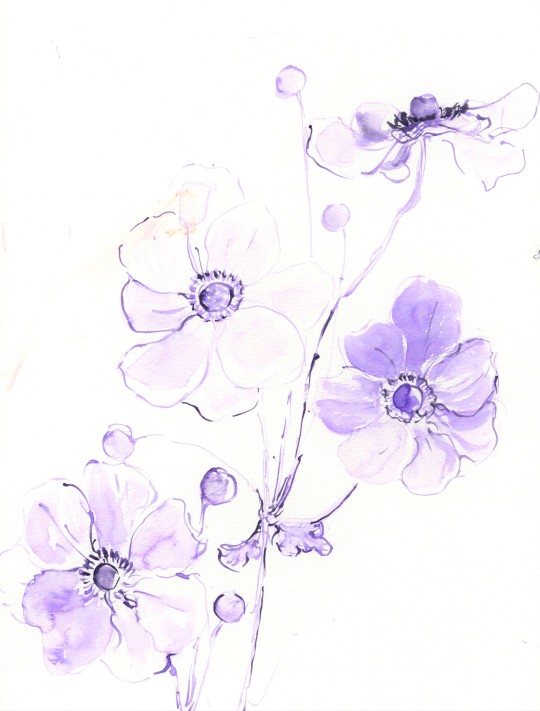
Seasonal Anomaly
Watercolor On Artboard
2023, 9"x 12"
Japanese Anemones, Eriocapitella hupehensis
Amethyst
#art#nature#flowers#autumn#fall#artists on tumblr#floral#watercolor#painting#minimalism#fall floral#autumnal#autumn anemones#japanese anemones#purple#purple aesthetic#botany#plants#artblr#creatrs#cottagecore aesthetic#contemporary art#amethyst
51 notes
·
View notes
Photo

(via 5 Perennials and Shrubs for your Fall Cutting Garden - Threads & Blooms)
Japanese Anemone (Eriocapitella hupehensis)
104 notes
·
View notes
Text
Japanese Anemone
Eriocapitella hupehensis (formerly Anemone japonica) is a species of flowering plant in the buttercup family Ranunculaceae native to Asia. Called shumeigiku in Japanese meaning 'autumn brightening chrysanthemum', it is a popular choice for chabana Japanese tea ceremony flower display.
13 notes
·
View notes
Photo

🦊 Unrealistic Expressionism: Blooming Beauty 🦊 HeavenSky aka Nicolas Sebastian 8/2022 😍 Theme: The feeling of the heart in the garden of paradise. Eriocapitella hupehensis, a species of flowering plant in the buttercup family Ranunculaceae, is native to Asia. The specific epithet hupehensis, which means "from Hupeh province, China", refers to a region where the species is known to occur. ✌️ #mygarden #garten #herbstanemone #heavensky #heavenskypopartica #photography #gardensofinstagram #gardenblogger #beautiful #beauty #Japaneseanemone #flowerphotography #blossoms summer #purple #dreams #macro #macrophotography #flowers #flowersofinstagram #epithethupehensis # (hier: Koblach, Vorarlberg, Austria) https://www.instagram.com/p/Cg48CU4q6sF/?igshid=NGJjMDIxMWI=
#mygarden#garten#herbstanemone#heavensky#heavenskypopartica#photography#gardensofinstagram#gardenblogger#beautiful#beauty#japaneseanemone#flowerphotography#blossoms#purple#dreams#macro#macrophotography#flowers#flowersofinstagram#epithethupehensis
0 notes
Text

Japanese Anemone
Kanazawa, Japan
#photographers on tumblr#nature#flowers#white#autumn#fall#floral#flores#blanco#anemone#japanese anemone#eriocapitella hupehensis#otoño#japanese garden#kenroku en#kanazawa#japan#original photographers#original photography#vertical
444 notes
·
View notes
Photo

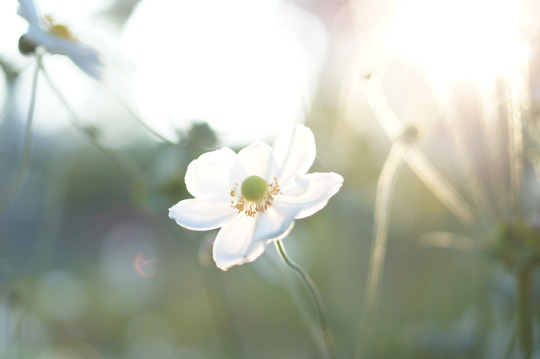


59 notes
·
View notes
Text

Japanese anemone Eriocapitella hupehensis “Honorine Jobert”
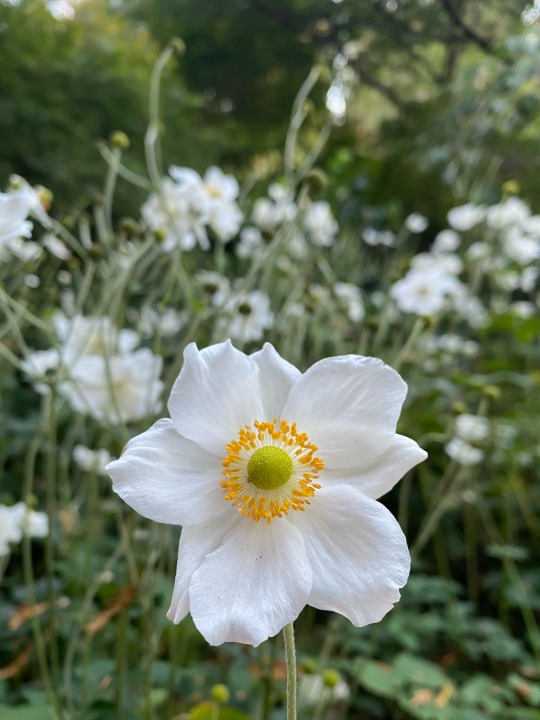
#botanic garden#botanical#woodland garden#cottage garden#gardening#forest flowers#forest floor#wild flowers#flowercore#floral illustration#floral aesthetic#floral arrangement#woodland#woodland aesthetic#white garden#romantic aesthetic#romantic academia#dark academia aesthetic#hobbit aesthetic#hobbitcore#countryside#cottagestyle#cottagecore#cottage charm#forest cottage#cottage vibes#cottage academia#autumn#grandmacore#mine
18 notes
·
View notes
Text




🌸The Anemone is a genus of flowering plants in the buttercup family Ranunculaceae. Depicted in these photos are Japanese anemones also known as Queen Charlotte. Eriocapitella hupehensis (Japanese Anemone), a species of flowering plant in the buttercup family Ranunculaceae, is native to Asia. 🌷
🐝The Ranunculaceae genus Anemone, comprising more than 150 species, has long been used in folk medicine and worldwide ethnomedicine. Various medicinal compounds have been found in Anemone plants, especially triterpenoid saponins, some of which have shown anti-cancer activities. Some Anemone compounds and extracts also display immunomodulatory, anti-inflammatory, antioxidant, and antimicrobial activities. 🏵
#anemone#japanese anemone#pink flowers#original photographers#photography#green witch#pagan wicca#norse pagan#nature#nature walks#pagen witch#english country garden#flower photography#flower aesthetic
6 notes
·
View notes
Photo



Eriocapitella hupehensis (Japanese anemone, windflower)
We didn’t grow any Japanese anemones this year so I took these photos down at the Stewart Historic Farmhouse (built in 1894). In the back of the farmhouse they have a heritage garden full of vintage vegetable varieties and close by is this rather large Japanese anemone. This flower was ‘discovered’ in China by Robert Fortune and he sent the first seeds back to England in 1844 and so, no doubt, Mrs. Stewart did plant them in her flower garden. Often called windflowers, anemones dance in every little breeze. I was lucky to show up on a very calm day and, remarkably, all my photos were in-focus.
#flowers#photographers on tumblr#anenome#windflower#pink#fleurs#flores#fiori#blumen#bloemen#Stewart Farmhouse#Vancouver
146 notes
·
View notes